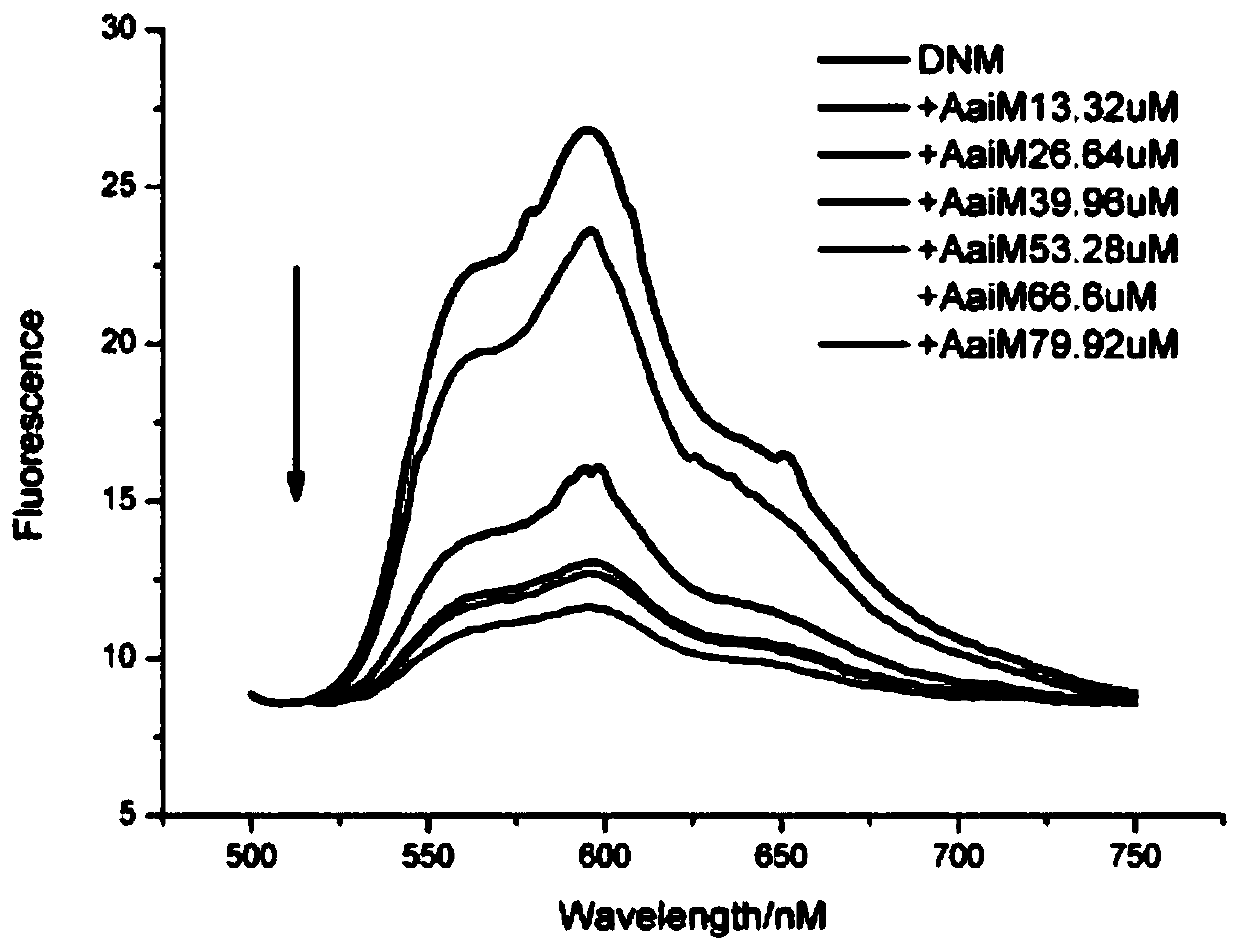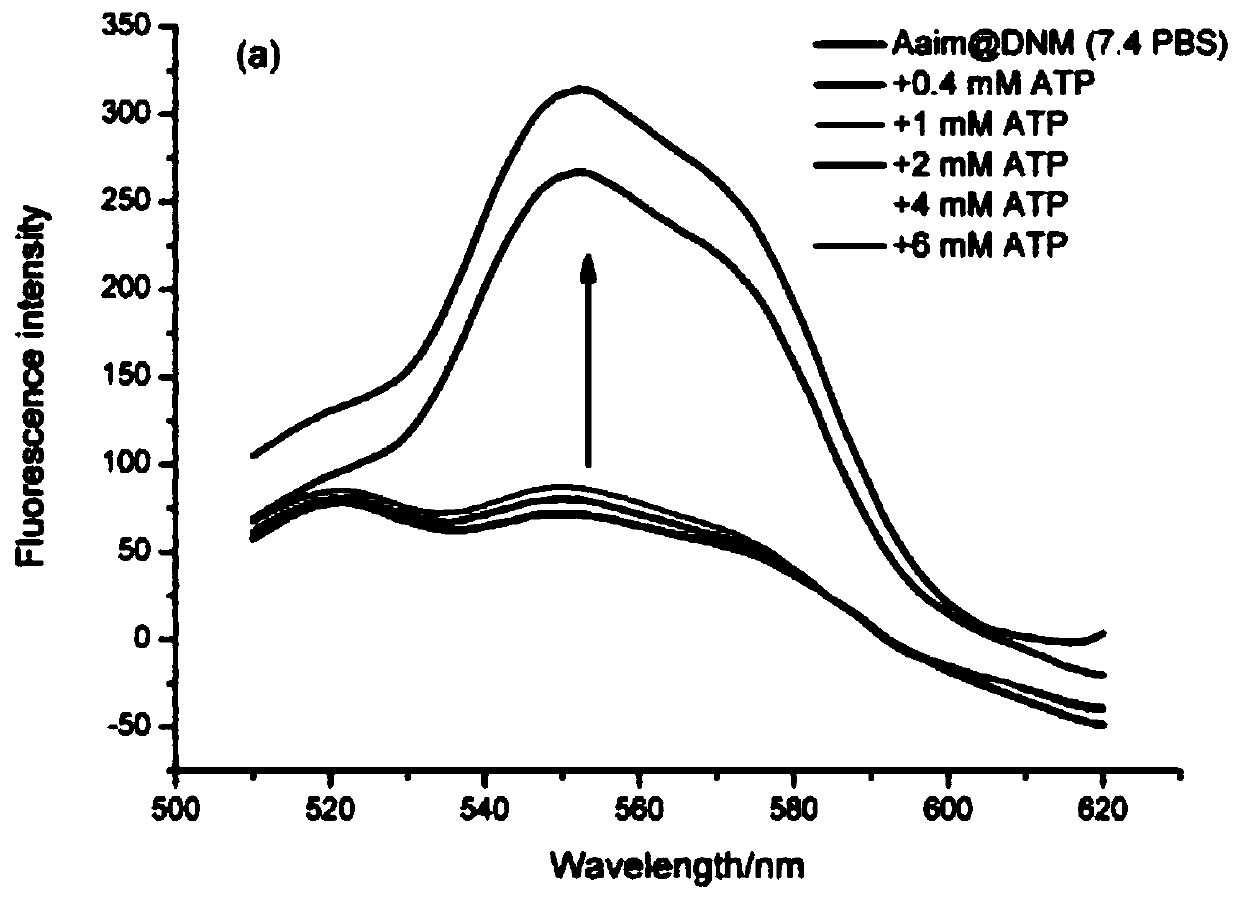Preparation and applications of pH and ATP response-type nano carrier
A nano-carrier and carrier technology, which is applied in the field of biomedicine, can solve the problems of lack of tissue-specific toxicity, and achieve the effects of efficient and targeted inhibition of tumor proliferation, increased biocompatibility, and efficient and rapid release
- Summary
- Abstract
- Description
- Claims
- Application Information
AI Technical Summary
Problems solved by technology
Method used
Image
Examples
Embodiment 1
[0046] Example 1 Preparation of pH and ATP-responsive nano drug delivery system:
[0047] Preparation of the main reaction solution:
[0048] Annealing buffer (200mM KCl, 4mM MgCl 2 , 28mM Tris-HCl): Accurately weigh 0.0190g MgCl 2 , 0.7456g KCl, 0.1695g Tris, add an appropriate amount of water to dissolve, adjust the pH to 8.0 with hydrochloric acid, and dilute to 50mL.
[0049] 1. Nucleic acid sequence annealing
[0050] ATP aptamer-i-motif and cDNA single-stranded DNA dry powder were added to nuclease-free water, respectively, and dissolved into nucleic acid solutions with a concentration of 100mM.
[0051] Add ATP aptamer-i-motif solution, cDNA solution, and annealing solution into the PCR tube at a ratio of 1:1:1 and shake and mix evenly. The mixed liquid is annealed in the PCR amplification instrument (heating at 95°C for 10mins, then slowly lowering to room temperature) to form a stem-loop structure of an ATP aptamer double helix structure (ATP-aptamer-cDNA, hereina...
Embodiment 2
[0057] Example 2 Investigation of the Related Properties of pH and ATP Responsive Nanocarriers
[0058] 1. Investigation of the responsive release of the nanosystem Aaim@DNM
[0059] ATP response: Dilute Aaim@DNM to 2.5ml with PBS buffer solution with a pH of 7.4, measure its fluorescence value, then add a certain amount of 400mM ATP solution one by one, the fluorescence measurement parameters are the same as in Example 1, and measure the change of its fluorescence intensity. The result is as Figure 3-a shown. Similarly, the detection result of the fluorescence intensity change at pH=5.6 is as follows Figure 3-b shown.
[0060] Depend on Figure 3-a and Figure 3-b It can be seen that with the increase of ATP, the greater the change of fluorescence intensity, the more DNM released by Aaim@DNM.
[0061] pH response: Dilute Aaim@DNM to 2.5 ml with PBS buffer at pH 3.8, 5.6, 6.8, and 7.4, respectively, and measure its fluorescence value. Fluorescent detection results su...
PUM
 Login to View More
Login to View More Abstract
Description
Claims
Application Information
 Login to View More
Login to View More - R&D
- Intellectual Property
- Life Sciences
- Materials
- Tech Scout
- Unparalleled Data Quality
- Higher Quality Content
- 60% Fewer Hallucinations
Browse by: Latest US Patents, China's latest patents, Technical Efficacy Thesaurus, Application Domain, Technology Topic, Popular Technical Reports.
© 2025 PatSnap. All rights reserved.Legal|Privacy policy|Modern Slavery Act Transparency Statement|Sitemap|About US| Contact US: help@patsnap.com



